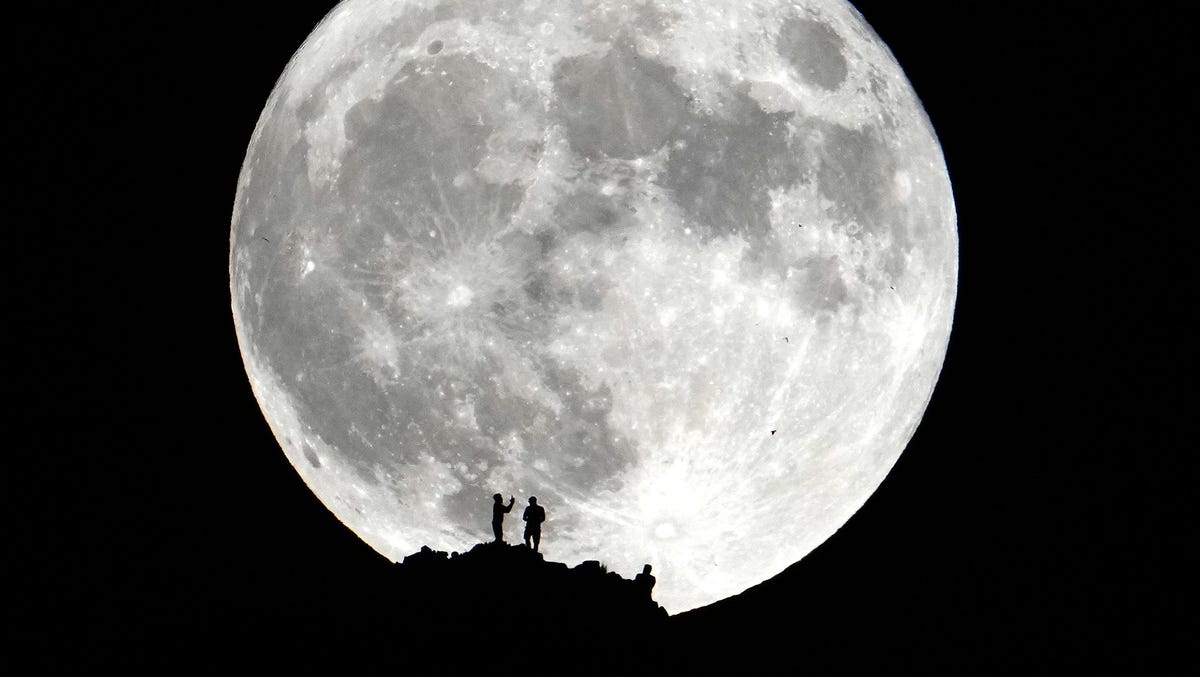Full Moon in August 2024: A Special Super Blue Moon – Viewing Guide
The full moon arriving on Monday, August 19, goes by multiple names, including supermoon, blue moon, and sturgeon moon.
The full moon on Monday, August 19, is known by several names: supermoon, blue moon, and sturgeon moon. What do these names signify?
The term “super” indicates the moon’s orbit is closer to Earth this month, making it appear larger and brighter. The “blue” designation means this is the third of four full moons in the summer season, a rare phenomenon. The term “sturgeon” comes from a name used by Native Americans for this month’s full moon.
So, how unique is it to have a supermoon paired with a blue moon? Typically, a blue moon occurs every two or three years, according to NASA, but a blue moon that is also a supermoon is quite rare. The interval between such events can be as long as 20 years, though 10 years is more common.
The next occurrence of a super blue moon is expected in January 2037.
When is the Full Moon in August 2024?
This month’s full moon will reach its maximum brightness at 2:26 p.m. EDT on Monday, August 19, 2024. At that moment, it won’t be visible from the U.S., but it will look very full when it rises in the east later that evening.
NASA notes that the moon will appear full for about three days, from Sunday morning until early Wednesday morning.
What Exactly is a Supermoon?
A supermoon occurs when the moon is at its closest point to Earth during its orbit while also being full. The term was introduced by astrologer Richard Nolle in 1979.
Nasa explains that definitions for what qualifies as a supermoon may vary among different sources. This is due to the moon’s elliptical orbit, which means its distance from Earth changes during its cycle.
What is a Blue Moon?
Blue moons can be classified into two types: seasonal and monthly. The one we’re discussing is a seasonal blue moon. This occurs during a season when there are four full moons. In this case, it’s summer, and our blue moon is the third full moon of the season.
The monthly blue moon, which often confuses people, refers to the second full moon occurring within a single month.
However, this full moon is not expected to actually appear blue; photographs showing blue moons typically utilize special filters or photo-editing tools.
The phrase “Blue Moon” was first documented in the English language in 1528.
What About the Sturgeon Moon?
The practice of naming moons helped Indigenous peoples mark the seasons and plan various activities. “August’s full moon was traditionally referred to as the sturgeon moon because this was the time of year when the giant sturgeon in the Great Lakes and Lake Champlain were most easily caught,” as noted by the Old Farmer’s Almanac.
While sturgeons were once abundant, their numbers have drastically declined due to overfishing and habitat destruction, according to the National Oceanic and Atmospheric Administration.

